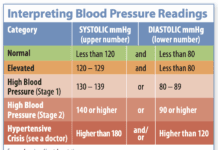A Food and Drug Administration (FDA) advisory committee unanimously recommended approval of a new type of implantable glucose monitoring device that can be left in place much longer than previous types. The new sensor is a cylinder measuring about 3/4-inch long and 1/8-inch wide. It’s inserted just under the skin on the upper arm under local anesthesia.
Sensors currently available typically last only 3 to 10 days. The new device can remain in place for up to 90 days, transmitting real-time blood sugar levels to a smartphone app via a tiny transmitter in an adhesive skin patch above the implanted sensor. The device also issues alerts when a person’s blood sugar gets dangerously high or low.
The device manufacturer is seeking approval for the device as an add-on to conventional fingerstick blood sugar monitoring. If the sensor indicates a need for an adjustment to blood sugar or other therapy, the user would confirm first with a more accurate fingerstick test.






















